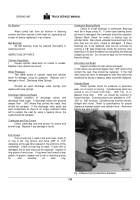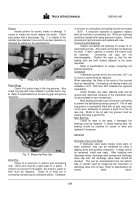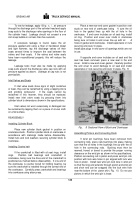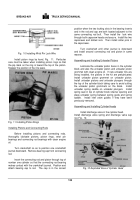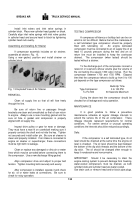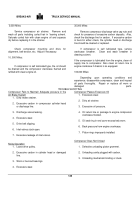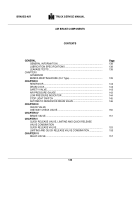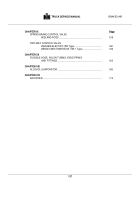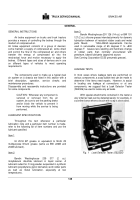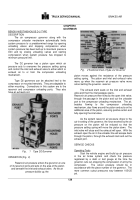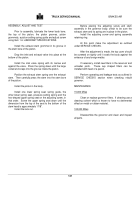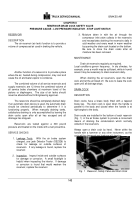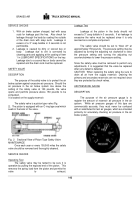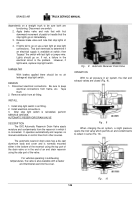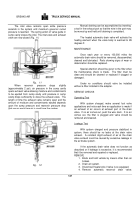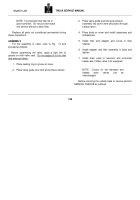TM-5-3805-254-14-P-2 - Page 142 of 894
BRAKES-AIR
TRUCK SERVICE MANUAL
With the engine still running make a series of
brake applications to reduce the air pressure and
observe at which pressure the governor cuts in the
compressor.
As in the case of the cutout pressure, the
cut-in pressure should be in accordance with the
governor piece number. Common cut-in pressures vary
between 80100 psi.
Never condemn or adjust the
governor pressure settings unless they are checked with
an accurate test gauge or a dash gauge that is
registering accurately. If the pressure settings of the
governor are inaccurate or it is necessary that they be
changed, procedure is as follows.
First, unscrew the cover at the top of the governor.
Next, loosen the adjusting screw lock nut.
With a
screwdriver
the
adjusting
screw
is
turned
counterclockwise to raise the pressure setting and the
screw is turned clockwise to lower the pressure setting.
After the adjustment is completed, the adjusting screw
lock nut should be tightened to lock this adjustment.
Leakage Tests
Leakage checks on the D2 governor are made at
its exhaust port in both cut-in and cutout positions. In the
cut-in position check exhaust port for inlet valve leakage
by applying a soap solution at the port.
Leakage could
also be past the bottom piston grommet. In the cutout
position check the exhaust port to determine leakage at
the exhaust valve seat or stem grommet.
In this position
leakage could also be past the upper piston grommet.
Leakage in excess of a 1" soap bubble in 3
seconds is not permissible in either of the foregoing
tests.
If excess leakage is found, the governor must be
repaired or replaced.
REMOVE
Block and hold vehicle by means other than air
brakes.
Drain air brake system.
If
governor
is
compressor
mounted
type,
disconnect reservoir air line.
If remote mounted
governor, disconnect both the unloader and reservoir air
lines.
Remove governor mounting bolts, then governor.
INSTALL
If compressor mounted type governor, clean
mounting pad on both compressor and governor block.
Clean connecting line or lines.
Also be sure compressor
unloading port is clear and clean.
If the governor is being mounted remotely, it
should be positioned so that its exhaust port points
down. It should be mounted higher than the compressor
so that its connecting lines will drain away from the
governor.
Install governor.
If compressor-mounted type, use a new governor
mounting gasket.
Connect air lines to governor.
Test governor as
outlined under SERVICE CHECKS.
DISASSEMBLY
Clean governor exterior of road dirt and grease
using a good cleaning solvent and brush.
Unscrew the top cover.
With a pair of retaining ring pliers remove the
spring assembly retaining ring.
Remove the adjusting screw and spring assembly.
Remove the lock nut, then the hex-shaped upper
spring seat from the adjusting screw.
Remove the pressure setting spring, lower spring
seat, spring guide and the other lower spring seat from
the adjusting screw.
Remove the exhaust stem and its spring from the
top of the piston.
With the body in the inverted position tap it lightly
and the piston should fall out.
Remove the inlet and exhaust valve spring and the
valve from the piston.
Remove the two piston grommets and with a
hooked wire remove the exhaust stem grommet.
Clean or remove the unloader and reservoir port
filters.
CLEANING AND INSPECTION
Clean all metal parts in a good cleaning solvent.
Wipe rubber parts dry.
Inspect body for cracks or other damage.
Be
particularly careful that the body air passages, the filters,
exhaust stem and piston are not obstructed.
Check springs for cracks, distortion or corrosion.
Replace all parts not considered serviceable
during these inspections.
140
Back to Top

